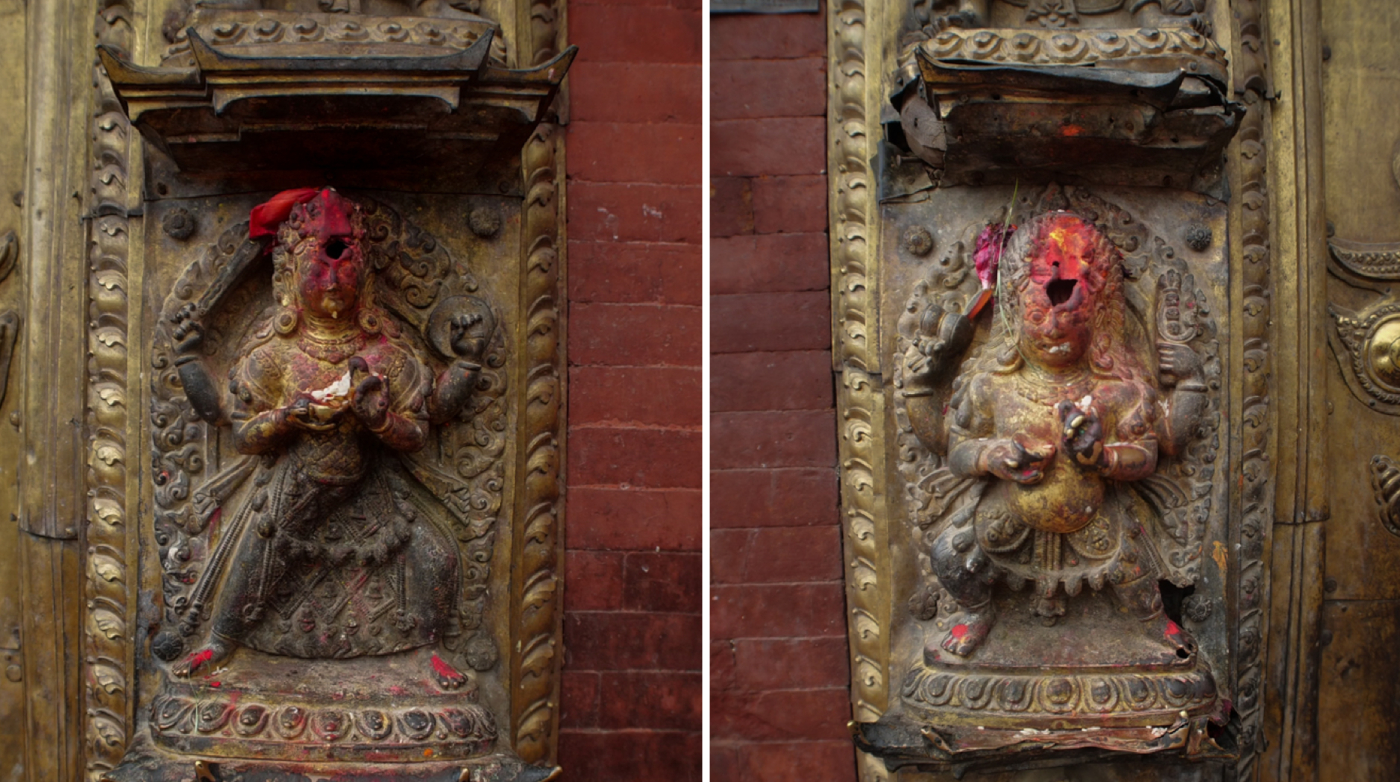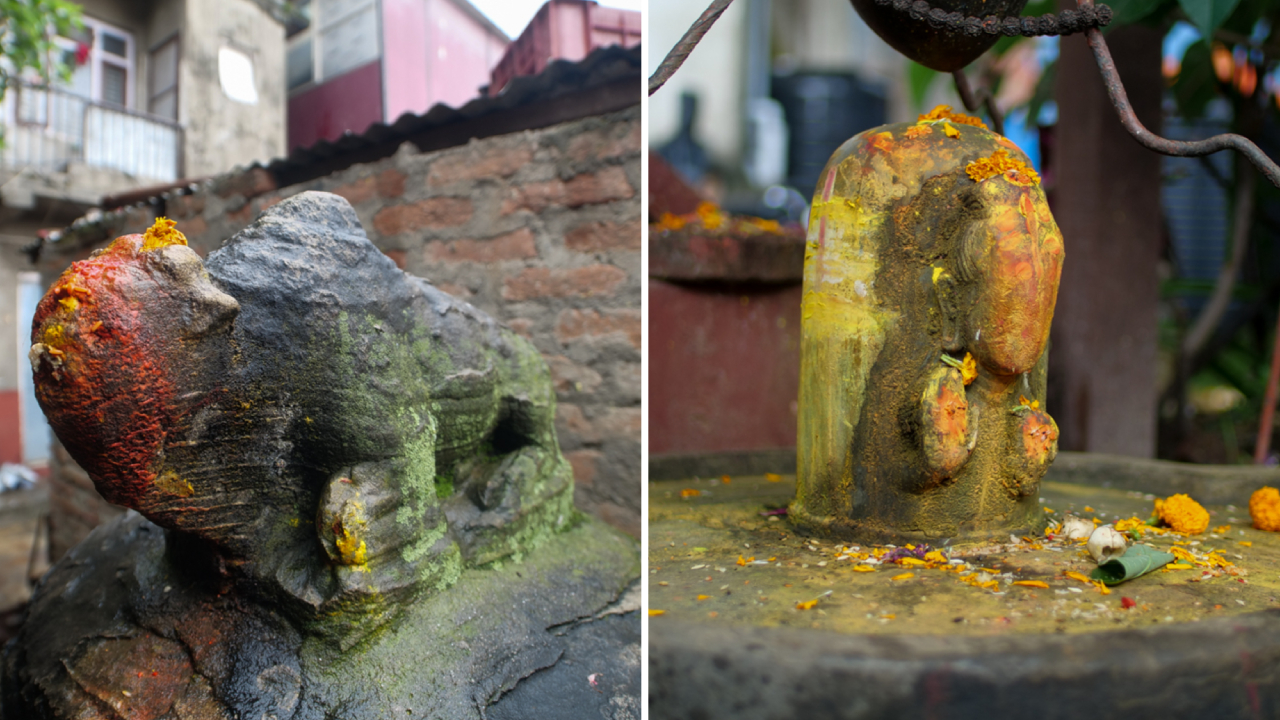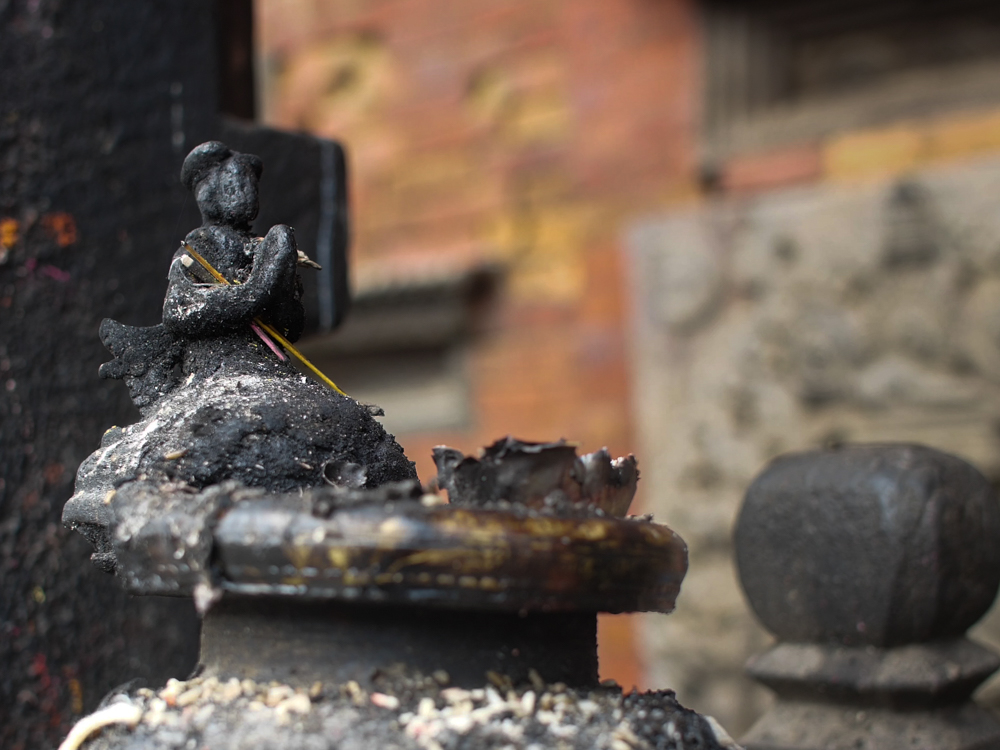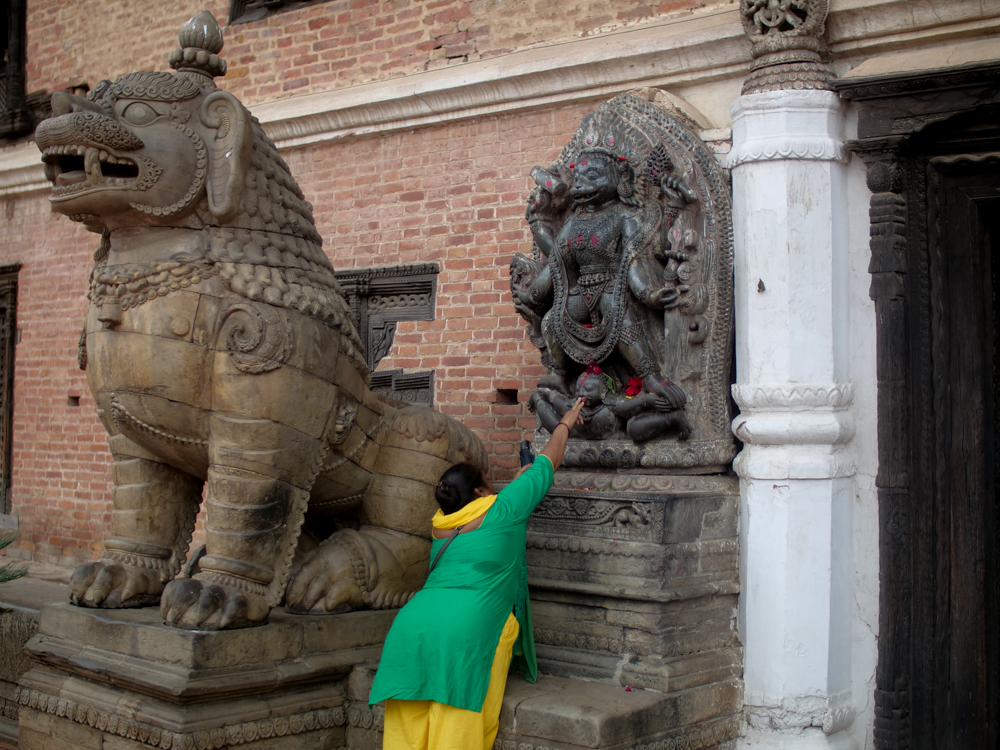Offerings corrode Kathmandu’s gods
Sacred idols are defaced by vermilion, chemical-based dyes, and centuries of contactThe Golden Gate in Bhaktapur Darbar Square is dedicated to Taleju, the ancestral goddess of the Malla kings. The temple was built 271 years ago during the reign of Ranjit Malla, and serves as the entryway to the inner courtyard of the palace.
The frame of the gilded copper pagoda-style gateway carries intricately carved deities that glint in the sunlight as thousands of visitors run their hands through the structure on their way into the World Heritage Site.
Among them are the much-revered statues of goddess Bhagwati on the right and Bhairab on the left of the gate. But where their foreheads should be are two gaping holes, corroded by abrasion and chemical dyes devotees have smeared on the statues over the centuries.
Whereas previously, most offerings were vegetable-based dyes, these are being replaced with brightly coloured chemicals that corrode the stone and bronze of the idols.

Chemical dyes have also eroded idols in Bhaktapur Darbar, and damaged stone inscriptions at their pedestals. Historian Purushottam Lochan Shrestha says: “It is interesting that idols and statues that are not worshipped as much have remained intact.”
Examples are the Hanuman Bhairav and Narasimha stone idols that flank the entrance to Bhaktapur’s National Art Museum. The inscriptions at their base say both statues were commissioned by King Bhupatindra Malla in 1689 and placed at the entry in the belief that they would ward off disease and disaster, and grant victory in battles with enemy states.
Today, the inscription on the lesser-worshipped Hanuman Bhairav retains much of its original form. But the etchings on the Narasimha — revered as the god who protects people from calamity and epidemics — have crumbled because of continuous contact over the decades.
“The idols we have are sacred and rare, we will never create statues like these again. So, it is crucial that we stop touching and using chemical offerings in ways that damage them,” adds Shrestha. “We need to change our behaviour and express our faith with our hearts, not with our hands. What good does it do to light lamps that burn the faces of our gods?”
While much of the focus in Nepal has rightly been on the repatriation of stolen artefacts, images and idols being worshipped at home face rapid deterioration in other ways. It is not just idols, historians are also finding it difficult to decipher inscriptions on stones which contain vital cultural, socio-economic and linguistic documentation because they have been smeared with offerings for so long.
An 11th century stone engraving in Bhaktapur Darbar Square that dates back to the Nirbhaya Dev has worn away because it was used as a stepping stone to draw water from a nearby well. The historically significant inscription documents the king gifting Aradhya Dev some land, and identifies Bhaktapur as श्री खोप्पु.
In Pashupati, one of the four holiest sites in Hinduism, near the temple’s western gate is a Shivalinga of Bishwamitreswor holding a rudraksha necklace in one hand and a kamandalu on the other which have been completely eroded by daily worship, while more inaccessible idols are intact.
Sushil Kumar Gautam, archaeological officer at the Pashupati Area Development Trust, told us that the statue’s features were clearly distinguishable until 50 years ago, but the accoutrements in Bishwamitreshwar’s hands are now just bare stumps.
“The deterioration of the shivalinga is quite recent, perhaps due to the increasing use of chemical-laden dyes and incense lamps,” Gautam told us.

Another sixth-century statue of a bull located in the courtyard of Pashupati remains intact because the public has been prohibited from touching the antiquity for the past 20 years.
The nearby Bankali temple houses a Lichchhavi-era statue of the goddess, armed with a sword and dancing over the prone form of the deity Betal. The stone idol is painted in hues of yellows and purples, and the inscription on the base of the idol has faded, rendering the words unreadable. Luckily, the original text and translation of the valuable inscription was recorded in 1973 by historian Dhana Bajra Bajracharya in his book Licchavi Kaal ka Abhilekh.
Other religious artefacts around the Chabahil and Jayabageshwari area are similarly buried underneath the weight of daily religious offerings of vermilion, flowers, fruits, sweets.
“We have been called anti-religion when we pointed out that the dyes and offerings have damaged our idols,” says Gautam. “Devotees should be made more aware of the damage they inflict on the gods and goddesses they worship.”
Many artefacts have been damaged so badly that they have had to be replaced multiple times, like the 16th century copper idol of a prone Betal on the main gate of the Maitidevi temple. The idol was replaced with a new one six months ago after constant contact with offerings corroded its mouth, forehead, and feet, says temple priest Tirtha Jyoti Bajracharya.
Burning of incense inside the temple was banned as the statues were coated in thick layers of corrosive soot. He says: “We cannot tell people not to worship, but we have to do what we can to preserve our gods. Some devotees understand us, others do not.”

Chemist Rajesh Prasad Singh of the Department of Archaeology confirms that offerings are the primary reason for the deterioration of religious artefacts. Vermilion is made from a mineral called cinnabar (mercury sulphide) and synthetic saffron corrodes stone and metal. Chemicals in processed milk and sweets offered to deities also damage the faces of idols, while oil from lamps contributes to discolouration.
“There is also natural weathering at work, but most of the damage is from touching or materials used for worship,” adds Singh.
Cultural expert Govinda Tandon agrees that deterioration of Nepal’s religious artefacts has accelerated in recent years because traditional organic dyes have been replaced with chemicals. Vermilion used to be made by mixing dried red sandalwood with pomegranate, rose, and rhododendron flowers, while henna, pine leaves or spinach were combined to make green dyes. Yellow was extracted from dried turmeric, and purple from beetroot.
Coloured powders available in the market, which are used for festivals like Tihar and Holi, are also toxic to humans because they contain compounds of lead (Pb), chromium (Cr), cadmium (Cd) and even mercury (Hg).
The Nepal government in 2015 set the maximum amount of lead allowed in colours and paints at 90 ppm (parts per million). But a 2021 study into 62 enamel paints currently sold in Nepal found that at least 30 contained more than the prescribed amount of lead.
Distance Worship
Meanwhile, the application of chemical-based paints and enamels on centuries-old woodcarvings across the city’s temples have also caused many to splinter.
“Most wood carvings are so damaged that we can no longer restore them,” says Singh. In India authorities have designated alternative places of worship, only allowing visitors to observe the world heritage sites from a distance.

Saubhagya Pradhananga, Director General of the Department of Archaeology, worships regularly at the feet of the reclining Vishnu at Budhanilkantha. Vermilion powder is no longer allowed on the main statue, and devotees have to worship from afar.
“What we can do is ban chemical-based worship material, and create separate spaces for religious offerings,” she says. “For this we need extensive public awareness efforts. Besides temples and idols we also have the intangible heritage of ritual worship linked to our faith, so completely stopping this practice is neither possible, nor the appropriate solution.”




